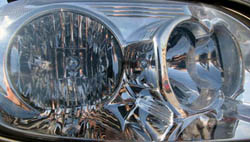High-strength plastics using novel reinforcement
Polymers are compounds made up of individual subunits called monomers. They are ubiquitous in nature (for example, starch and proteins) and are synthesised in industry for a variety of applications. Polyolefins are synthetic polymers produced from simple olefins, or alkenes. Polyethylene and polypropylene are among the most common polyolefins industrially. Polyolefin nanocomposites, materials made of a polyolefin matrix in which nanoparticles of some other compound(s) have been embedded (intercalated), have shown great promise in the lab. However, mass production using conventional equipment is expensive and results in products of inferior performance relative to expectations. European scientists initiated the ‘Nanostructured toughened hybrid nanocomposites for high-performance applications’ (Nanotough) project to characterise the dispersion of nanoparticles within the polyolefin matrix. In particular, investigators are focusing on the interface between nanocomposite materials and the polyolefin matrix. They are seeking ways to increase the stiffness and impact strength of polyolefin nanocomposites through development of new, cost-effective nanofiller-fibre (hybrid) nanocomposites. In addition to synthesising novel polymers to enhance intercalation of nanoparticles in polyolefins, Nanotough scientists are using state-of-the-art microscopy and visualisation technology to study the interface structure and composition. Using experimental data, they have developed improved models of nanocomposites. Experimental and theoretical data have helped the team to enhance several mechanical properties as well as provided important insight into chemical modification and processing. Insight provided know-how that should help remove technical barriers to production leading to realisation of the great performance potential of these materials. Mass-production of such polyolefin nanocomposites could lead to fundamental changes in the way numerous metal and plastic-based products, such as those in the automotive and aircraft industries, are used.







